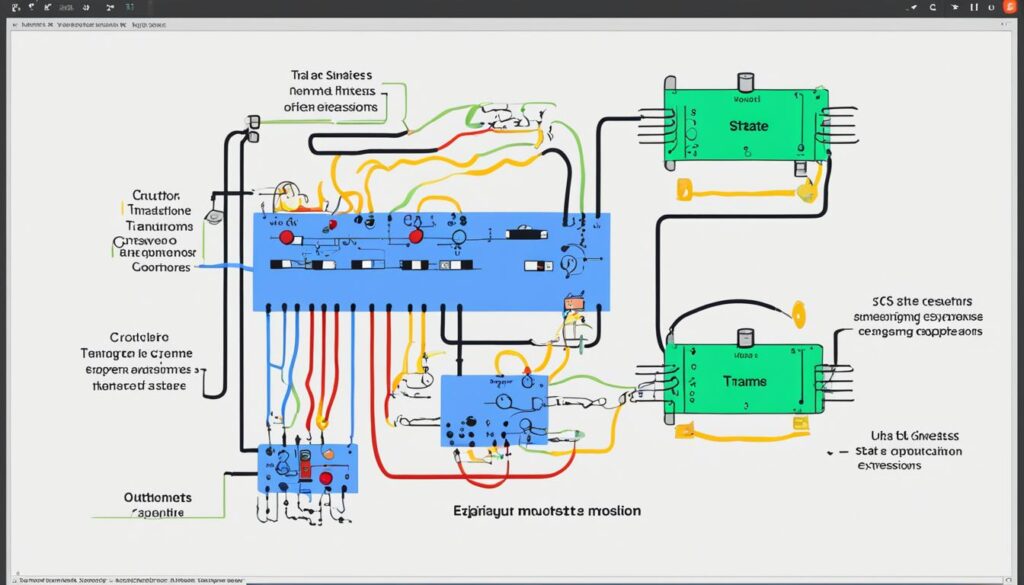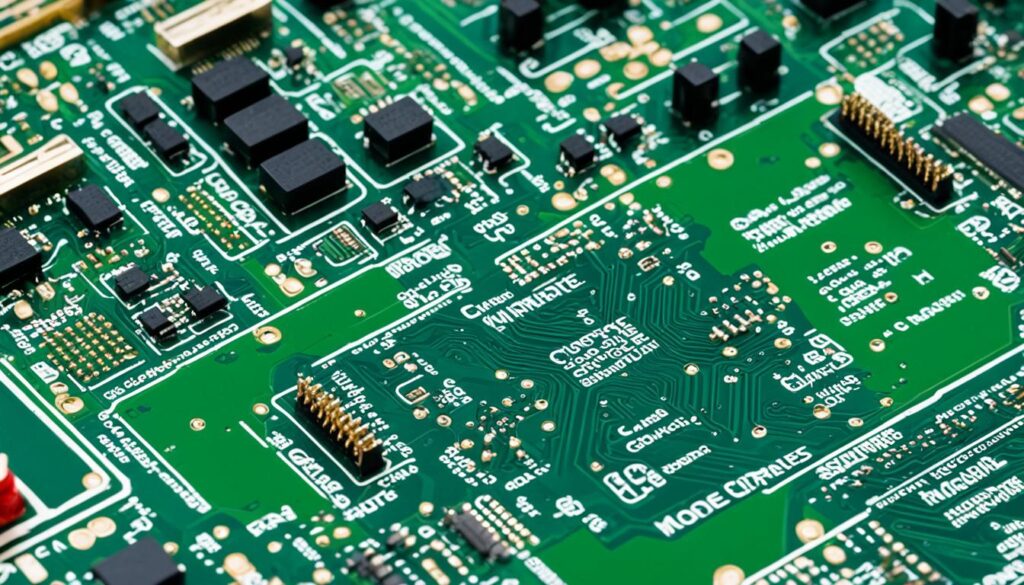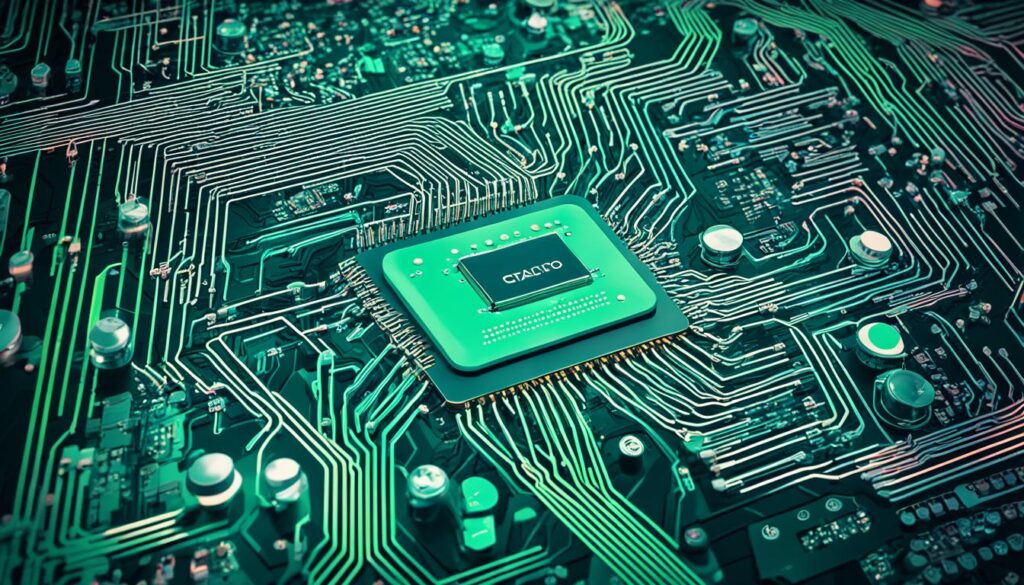Welcome to the world of digital circuits and the fascinating concept of Moore State Machines! In this article, we will dive deep into the intricacies of Moore State Machines and their significance in the realm of digital circuit design.
A Moore State Machine is a crucial component in the creation of complex digital circuits. It plays a crucial role in synchronous systems and enables engineers to design circuits that meet specific requirements. By understanding the principles and applications of Moore State Machines, engineers can unlock a world of possibilities in the realm of digital circuitry.
Join us on this journey as we explore the fundamental principles of Moore State Machines, delve into the process of designing them, and uncover their advantages in various applications. Whether you are an aspiring engineer or a seasoned professional, this article will provide valuable insights into Moore State Machines and their role in the world of digital circuits.
Table of Contents
Understanding the Moore State Machine
In this section, we will explore the fundamental principles of a Moore State Machine and gain a comprehensive understanding of its inner workings. The Moore State Machine serves as a crucial component in the design and implementation of digital circuits, facilitating efficient and reliable state transitions based on input signals.
Basic Architecture
The Moore State Machine consists of two essential components: a set of states and a state transition function. The states represent the different conditions or modes of operation within the machine, while the transition function defines the rules for changing from one state to another.
To visualize the architecture, consider a simplified example of a vending machine. Each state of the machine represents a specific phase of the vending process, such as idle, selection, payment, and dispensing. The transition function determines the sequence of states based on user inputs and system conditions.
As shown in the table below, the state transition function defines the current state, the input signal, and the resulting output signal:
| Current State | Input | Output |
|---|---|---|
| State 1 | Input A | Output X |
| State 2 | Input B | Output Y |
| State 3 | Input C | Output Z |
In the vending machine example, the current state represents the phase the machine is in, such as idle or payment. The input signal corresponds to the user’s actions, such as pressing a button or inserting coins. The output signal signifies the response or action taken by the machine, such as displaying a message or dispensing a product.
State Transitions and Inputs/Outputs
The Moore State Machine operates through a series of state transitions triggered by input signals. When an input signal is received, the machine evaluates the current state and the input to determine the next state and output response.
Let’s revisit the vending machine example to illustrate this concept. Suppose the machine is in the idle state. When a user selects a product (Input A), the machine transitions to the selection state and displays the available options (Output X). If the user then inserts the correct amount of coins (Input B), the machine transitions to the payment state and displays the payment confirmation (Output Y).
Therefore, the Moore State Machine relies on the interactions between states, inputs, and outputs to carry out the desired actions in a digital circuit.
With a clear understanding of the fundamental principles behind a Moore State Machine, we can now move on to the process of designing these machines in the next section.
Designing Moore State Machines
In this section, we will explore the process of designing Moore State Machines for digital circuits. Designing an efficient Moore State Machine involves several steps that ensure the system functions correctly and meets the desired specifications.
State Identification
The first step in designing a Moore State Machine is to identify the states that the system will transition through. Each state represents a specific condition or combination of inputs and outputs within the circuit. By carefully analyzing the system requirements and desired behavior, engineers can determine the necessary states for the machine.
State Transition Table Creation
Once the states are identified, the next step is to create a state transition table. This table defines the possible state transitions based on the current state and the input signals. It maps out the conditions that trigger a transition from one state to another, ensuring the system progresses in the desired sequence.
Input and Output Specifications
To design an effective Moore State Machine, it is crucial to define the input and output specifications. Inputs are the signals received by the machine that influence the state transitions, while outputs are the signals produced by the machine in response to the inputs and current state. Accurate specification of these inputs and outputs is essential for the proper functioning of the machine.
Implementation of Necessary Logic Gates
Once the state transition table and input/output specifications are defined, the final step is to implement the necessary logic gates for the Moore State Machine. The logic gates, such as AND, OR, and NOT gates, are responsible for processing the input signals and determining the state transitions and output signals. Careful consideration and implementation of these logic gates ensure the machine operates correctly and yields the desired results.
Designing Moore State Machines is a critical aspect of digital circuit design. By following the necessary steps and considering the system requirements, engineers can create efficient and reliable machines that satisfy the specific needs of various applications.

Advantages and Applications of Moore State Machines
In the realm of digital circuit design, Moore State Machines offer numerous advantages and find wide-ranging applications. Let’s delve into the benefits they bring and explore the diverse fields where they are commonly utilized.
Advantages of Moore State Machines
One of the key advantages of Moore State Machines lies in their efficient memory utilization. By utilizing a separate output for each state, Moore State Machines manage to optimize memory storage, resulting in streamlined circuit design.
In addition, Moore State Machines are known for their low power consumption. This makes them highly desirable for applications where energy efficiency is crucial, such as in battery-powered devices or embedded systems where power is limited.
Another advantage offered by Moore State Machines is their compact size. The simplified architecture and minimalistic approach make them ideal for applications where space constraints are a concern. Compact size not only facilitates easier integration into larger systems but also reduces overall costs.
Applications of Moore State Machines
Moore State Machines find extensive applications in various domains due to their versatility and efficiency. Let’s explore a few notable application areas:
- Control Systems: Moore State Machines play a fundamental role in control systems, where they are responsible for controlling and coordinating the operation of different components and subsystems. They provide an organized approach to managing states and outputs, ensuring smooth system functionality.
- Data Processing: In data processing applications, Moore State Machines are extensively employed for tasks such as data storage, data manipulation, and algorithm execution. Their efficient memory utilization and streamlined circuit design make them suitable for handling complex data processing tasks effectively.
- Communication Protocols: Moore State Machines are widely used in communication protocols, enabling efficient data transmission and reception. By defining various states and respective outputs, they help manage the flow of information, ensuring reliable communication between different devices and systems.
In summary, the advantages of Moore State Machines in terms of memory utilization, power consumption, and size make them invaluable in digital circuit design. Their applications span control systems, data processing, and communication protocols, showcasing their versatility and efficiency. Engineers can leverage the benefits of Moore State Machines to create robust and optimal digital circuits tailored to specific requirements.

Conclusion
In conclusion, Moore State Machines play a crucial role in the design and implementation of digital circuits. These machines provide a structured approach to state transitions and outputs, making them an essential component in synchronous systems.
By understanding the principles and applications of Moore State Machines, engineers can create efficient and reliable digital circuits that meet specific requirements. The systematic process of designing Moore State Machines ensures clear identification of states, efficient state transitions, and accurate input and output specifications.
Moore State Machines offer several advantages in terms of memory utilization, power consumption, and size. Their efficient use of resources makes them highly suitable for various applications, including control systems, data processing, and communication protocols. The versatility and reliability of Moore State Machines make them indispensable in the world of digital circuit design.

